Dynamics and Driving Mechanism of Real Estate in China’s Small Cities: A Case Study of Gansu Province
Abstract
1. Introduction
2. The Literature Review
2.1. Studies on the Spatial Effect of Real Estate Economy
2.2. Studies on Factors Influencing Real Estate Market Development
2.3. Summary of the Literature Review
3. Research Design
3.1. Study Area: County Level Cities in Gansu Province
3.2. Research Steps
3.3. Research Methods
3.3.1. Spatiotemporal Dynamic Analysis Method: Boston Consulting Group Matrix (BCG)
3.3.2. Spatial Effect Analysis Method: ESDA and Gini
3.3.3. Geodetector
4. Results
4.1. Spatiotemporal Dynamics
4.1.1. Distribution Pattern Analysis
4.1.2. Evolution Mode
4.2. Drive Mechanism Analysis
4.2.1. Direct Influence
4.2.2. Interactive Influence
4.2.3. Mechanism Analysis
5. Discussion: Management Policy Design Application
5.1. Comprehensive Development Policy Area
5.2. Contribution Improvement Policy Area
5.3. Scale Growth Policy Area
5.4. Free Decision Policy Area
6. Conclusions
Author Contributions
Funding
Data Availability Statement
Acknowledgments
Conflicts of Interest
References
- Marfatia, H.A.; André, C.; Gupta, R. Predicting Housing Market Sentiment: The Role of Financial, Macroeconomic and Real Estate Uncertainties. J. Behav. Financ. 2022, 23, 189–209. [Google Scholar] [CrossRef]
- Ross, E.J.; Shibut, L. Loss Given Default, Loan Seasoning and Financial Fragility: Evidence from Commercial Real Estate Loans at Failed Banks. J. Real Estate Financ. Econ. 2020, 63, 630–661. [Google Scholar] [CrossRef]
- Huang, Y.; Khan, J.; Girardin, E.; Shad, U. The Role of the Real Estate Sector in the Structural Dynamics of the Chinese Economy: An Input–Output Analysis. China World Econ. 2021, 29, 61–86. [Google Scholar] [CrossRef]
- Jiang, Y.; Zheng, L.; Wang, J. Research on external financial risk measurement of China real estate. Int. J. Financ. Econ. 2020, 26, 5472–5484. [Google Scholar] [CrossRef]
- Han, Y.; Zhang, H.; Zhao, Y. Structural evolution of real estate industry in China: 2002–2017. Struct. Chang. Econ. Dyn. 2021, 57, 45–56. [Google Scholar] [CrossRef]
- Cai, Z.; Liu, Q.; Cao, S. Real estate supports rapid development of China’s urbanization. Land Use Policy 2020, 95, 104582. [Google Scholar] [CrossRef]
- Montagnoli, A.; Nagayasu, J. UK house price convergence clubs and spillovers. J. Hous. Econ. 2015, 30, 50–58. [Google Scholar] [CrossRef]
- Gu, H.; Liu, Z.; Weng, Y. Time-varying correlations in global real estate markets: A multivariate GARCH with spatial effects approach. Phys. A Stat. Mech. Appl. 2017, 471, 460–472. [Google Scholar] [CrossRef]
- Moscone, F.; Tosetti, E.; Canepa, A. Real estate market and financial stability in US metropolitan areas: A dynamic model with spatial effects. Reg. Sci. Urban Econ. 2014, 49, 129–146. [Google Scholar] [CrossRef]
- Mosciaro, M. The real estate/financial complex in Brazil and Italy: Tools for the financial production of urban space. Scr. No-Va-Rev. Electron. Geogr. Cienc. Soc. 2021, 25, 59–81. [Google Scholar] [CrossRef]
- Evans, B.P.; Glavatskiy, K.; Harré, M.S.; Prokopenko, M. The impact of social influence in Australian real estate: Market forecasting with a spatial agent-based model. J. Econ. Interact. Coord. 2021, 1–53. [Google Scholar] [CrossRef]
- Dubé, J.; Legros, D. A spatio-temporal measure of spatial dependence: An example using real estate data. Pap. Reg. Sci. 2013, 92, 19–30. [Google Scholar] [CrossRef]
- Barreca, A.; Curto, R.; Rolando, D. Urban Vibrancy: An Emerging Factor that Spatially Influences the Real Estate Market. Sustainability 2020, 12, 346. [Google Scholar] [CrossRef]
- Pace, R.K.; Barry, R.; Sirmans, C.F. Spatial Statistics and Real Estate. J. Real Estate Financ. Econ. 1998, 17, 5–13. [Google Scholar] [CrossRef]
- Wang, P.; Lin, X.; Dai, D. Spatiotemporal Agglomeration of Real-Estate Industry in Guangzhou, China. Sustainability 2017, 9, 1445. [Google Scholar] [CrossRef]
- Lukas, M.; López-Morales, E. Real estate production, geographies of mobility and spatial contestation: A two-case study in Santiago de Chile. J. Transp. Geogr. 2018, 67, 92–101. [Google Scholar] [CrossRef]
- Shatkin, G. The real estate turns in policy and planning: Land monetization and the political economy of peri-urbanization in Asia. Cities 2016, 53, 141–149. [Google Scholar] [CrossRef]
- Susewind, R. Spatial Segregation, Real Estate Markets and the Political Economy of Corruption in Lucknow, India. J. S. Asian Dev. 2015, 10, 267–291. [Google Scholar] [CrossRef]
- Ramos, G.C.D. Real Estate Industry as an Urban Growth Machine: A Review of the Political Economy and Political Ecology of Urban Space Production in Mexico City. Sustainability 2019, 11, 1980. [Google Scholar] [CrossRef]
- Jun, M.-J. The effects of Seoul’s greenbelt on the spatial distribution of population and employment, and on the real estate market. Ann. Reg. Sci. 2012, 49, 619–642. [Google Scholar] [CrossRef]
- Ceccato, V.; Wilhelmsson, M. Do crime hot spots affect housing prices? Nord. J. Criminol. 2019, 21, 84–102. [Google Scholar] [CrossRef]
- Iqbal, A.; Wilhelmsson, M. Park proximity, crime and apartment prices. Int. J. Hous. Mark. Anal. 2018, 11, 669–686. [Google Scholar] [CrossRef]
- Aguirre, C.; Marmolejo, C. Polycentrism impact on the spatial distribution of values Real estate: An analysis for the metropolitan area of Barcelona. Rev. Constr. 2011, 10, 78–88. [Google Scholar] [CrossRef]
- Li, W.; Weng, L.; Zhao, K.; Zhao, S.; Zhang, P. Research on the Evaluation of Real Estate Inventory Management in China. Land 2021, 10, 1283. [Google Scholar] [CrossRef]
- Dong, Z.; Sing, T.F. How Do Land Auction Formats Influence the Market Structure and Aggregate Surplus of Real Estate Development? Real Estate Econ. 2016, 44, 691–725. [Google Scholar] [CrossRef]
- Golob, K.; Bastic, M.; Psunder, I. Influence of Inflation and Interest Rates on The Value of Real Estate. Actual Probl. Econ. 2012, 134, 372–381. [Google Scholar]
- Ahmed, I.; Socci, C.; Severini, F.; Pretaroli, R.; Al Mahdi, H.K. Unconventional monetary policy and real estate sector: A financial dynamic computable general equilibrium model for Italy. Econ. Syst. Res. 2020, 32, 221–238. [Google Scholar] [CrossRef]
- Edelstein, R.; Qian, W.; Tsang, D. How Do Institutional Factors Affect International Real Estate Returns? J. Real Estate Financ. Econ. 2011, 43, 130–151. [Google Scholar] [CrossRef]
- Wei, Y.; Lam, P.T.-I.; Chiang, Y.-H.; Leung, B.Y.-P.; Seabrooke, W. An Exploratory Analysis of Impediments to China’s Credit Control on the Real Estate Industry: An institutional perspective. J. Contemp. China 2014, 23, 44–67. [Google Scholar] [CrossRef]
- Bergeaud, A.; Ray, S. Adjustment Costs and Factor Demand: New Evidence from Firms’ Real Estate. Econ. J. 2021, 131, 70–100. [Google Scholar] [CrossRef]
- Abukar, W.; Rune, W.; Mats, W.; Zan, Y. The Impact of Competition, Subsidies and Taxes on Production and Construction Cost: The Case of the Swedish Housing Construction Market. Int. Sch. Res. Not. 2013, 7, 1–7. [Google Scholar]
- Shen, L.; Zhang, Z.; Zhang, X. Key factors affecting green procurement in real estate development: A China study. J. Clean. Prod. 2017, 153, 372–383. [Google Scholar] [CrossRef]
- Zalejska-Jonsson, A.; Wilkinson, S.J.; Wahlund, R. Willingness to Pay for Green Infrastructure in Residential Development—A Consumer Perspective. Atmosphere 2020, 11, 152. [Google Scholar] [CrossRef]
- McMillan, A.; Chakraborty, A. Who Buys Foreclosed Homes? How Neighborhood Characteristics Influence Real Estate-Owned Home Sales to Investors and Households. Hous. Policy Debate 2016, 26, 766–784. [Google Scholar] [CrossRef]
- Ullah, F.; Sepasgozar, S.M.E. Key Factors Influencing Purchase or Rent Decisions in Smart Real Estate Investments: A System Dynamics Approach Using Online Forum Thread Data. Sustainability 2020, 12, 4382. [Google Scholar] [CrossRef]
- Dabholkar, P.A.; Overby, J.W. An investigation of real estate agent service to home sellers: Relevant factors and attributions. Serv. Ind. J. 2006, 26, 557–579. [Google Scholar] [CrossRef]
- Oikarinen, E.; Falkenbach, H. Foreign investors’ influence on the real estate market capitalization rate—Evidence from a small open economy. Appl. Econ. 2017, 49, 3141–3155. [Google Scholar] [CrossRef]
- Zhang, H.; Li, L.; Chen, T.; Li, V. Where will China’s real estate market go under the economy’s new normal? Cities 2016, 55, 42–48. [Google Scholar] [CrossRef]
- Sun, L.; Zhang, S. External Dependent Economy and Structural Real Estate Bubbles in China. China World Econ. 2008, 16, 34–50. [Google Scholar] [CrossRef]
- Zhang, H.R.; Yang, Y. Does Tourism Contribute to Real Estate Boom? A Dsge Modeling in Small Open Economy. J. Hosp. Tour. Res. 2021, 45, 257–279. [Google Scholar] [CrossRef]
- Yan, Z.L. Empirical Researches on Macroeconomic Influence factors in Real Estate Based on Data Mining (DM). Agro Food Ind. Hi-Tech 2017, 28, 2729–2732. [Google Scholar]
- Ang, A.; Nabar, N.; Wald, S.J. Searching for a Common Factor in Public and Private Real Estate Returns. J. Portf. Manag. 2013, 39, 120. [Google Scholar] [CrossRef]
- Kirikkaleli, D.; Athari, S.A.; Ertugrul, H.M. The real estate industry in Turkey: A time series analysis. Serv. Ind. J. 2021, 41, 427–439. [Google Scholar] [CrossRef]
- Hamelink, F.; Hoesli, M. What factors determine international real estate security returns? Real Estate Econ. 2004, 32, 437–462. [Google Scholar] [CrossRef][Green Version]
- Ho, D.K.H.; Addae-Dapaah, K.; Glascock, J.L. International Direct Real Estate Risk Premiums in a Multi-Factor Estimation Model. J. Real Estate Financ. Econ. 2015, 51, 52–85. [Google Scholar] [CrossRef]
- Pavlov, A.; Steiner, E.; Wachter, S. Macroeconomic Risk Factors and the Role of Mispriced Credit in the Returns from International Real Estate Securities. Real Estate Econ. 2015, 43, 241–270. [Google Scholar] [CrossRef]
- Eichholtz, P.; Huisman, R.; Koedijk, K.; Schuin, L. Continental Factors in International Real Estate Returns. Real Estate Econ. 1998, 26, 493–509. [Google Scholar] [CrossRef]
- Carrasco-Gallego, J. Real Estate, Economic Stability and the New Macro-Financial Policies. Sustainability 2021, 13, 236. [Google Scholar] [CrossRef]
- Bouwmeester, J.; Hartmann, T. Unraveling the self-made city: The spatial impact of informal real estate markets in informal settlements. Cities 2021, 108, 102966. [Google Scholar] [CrossRef]
- Sarathy, P.S. TQM practice in real-estate industry using AHP. Qual. Quant. 2013, 47, 2049–2063. [Google Scholar] [CrossRef]
- Chang, K.-F.; Chou, P.-C. Measuring the influence of the greening design of the building environment on the urban real estate market in Taiwan. Build. Environ. 2010, 45, 2057–2067. [Google Scholar] [CrossRef]
- Wilhelmsson, M.; Long, R. Impacts of shopping malls on apartment prices: The case of Stockholm. Nord. J. Surv. Real Estate Res. 2020, 5, 29–48. [Google Scholar] [CrossRef]
- Martori, J.C.; Madariaga, R.; Oller, R. Real estate bubble and urban population density: Six Spanish metropolitan areas 2001–2011. Ann. Reg. Sci. 2016, 56, 369–392. [Google Scholar] [CrossRef]
- Wilhelmsson, M.; Zhao, J. Risk Assessment of Housing Market Segments: The Lender’s Perspective. J. Risk Financ. Manag. 2018, 11, 69. [Google Scholar] [CrossRef]
- Wilhelmsson, M. Evidence of Buyer Bargaining Power in the Stockholm Residential Real Estate Market. J. Real Estate Res. 2008, 30, 475–500. [Google Scholar] [CrossRef]
- Wilhelmsson, M.; Ceccato, V. Does burglary affect property prices in a nonmetropolitan municipality? J. Rural Stud. 2015, 39, 210–218. [Google Scholar] [CrossRef]
- Smith, B.C. The impact of tax increment finance districts on localized real estate: Evidence from Chicago’s multifamily markets. J. Hous. Econ. 2006, 15, 21–37. [Google Scholar] [CrossRef]
- Berggren, B.; Fili, A.; Wilhelmsson, M. Homeownership and entrepreneurship A regional and industrial analysis of house prices and startups. Int. J. Hous. Mark. Anal. 2019, 12, 456–473. [Google Scholar] [CrossRef]
- Mandell, S.; Wilhelmsson, M. Financial infrastructure and house prices. Appl. Econ. 2015, 47, 3175–3188. [Google Scholar] [CrossRef]
- Liu, X.-X.; Song, Y.-Y.; Liu, H.-H.; Yang, G.-L. Regional efficiency of the real estate industry in 35 large and medium-sized cities in China: A meta-frontier SBM approach. Post-Communist Econ. 2021, 34, 376–408. [Google Scholar] [CrossRef]
- Liu, X.-X.; Liu, H.-H.; Yang, G.-L.; Pan, J.-F. Productivity assessment of the real estate industry in china: A two-stage malmquist productivity index. Int. J. Strat. Prop. Manag. 2021, 25, 146–168. [Google Scholar] [CrossRef]
- Yang, G.-L.; Fukuyama, H.; Chen, K. Investigating the regional sustainable performance of the Chinese real estate industry: A slack-based DEA approach. Omega 2019, 84, 141–159. [Google Scholar] [CrossRef]
- Franses, P.H.; De Groot, B. Do commercial real estate prices have predictive content for GDP? Appl. Econ. 2013, 45, 4379–4384. [Google Scholar] [CrossRef]
- Jin, Y.; Leung, C.K.; Zeng, Z. Real Estate, the External Finance Premium and Business Investment: A Quantitative Dynamic General Equilibrium Analysis. Real Estate Econ. 2012, 40, 167–195. [Google Scholar] [CrossRef]
- Pan, J.-N.; Huang, J.-T.; Chiang, T.-F. Empirical study of the local government deficit, land finance and real estate markets in China. China Econ. Rev. 2015, 32, 57–67. [Google Scholar] [CrossRef]
- Bischoff, O. Explaining regional variation in equilibrium real estate prices and income. J. Hous. Econ. 2012, 21, 1–15. [Google Scholar] [CrossRef]
- Ren, H.; Folmer, H.; Van der Vlist, A.J. What role does the real estate–construction sector play in China’s regional economy? Ann. Reg. Sci. 2014, 52, 839–857. [Google Scholar] [CrossRef]
- Bashar, O.H.M.N. An Intra-City Analysis of House Price Convergence and Spatial Dependence. J. Real Estate Financ. Econ. 2020, 63, 525–546. [Google Scholar] [CrossRef]
- Li, L.; Zhao, K.; Wang, X.; Zhao, S.; Liu, X.; Li, W. Spatio-Temporal Evolution and Driving Mechanism of Urbanization in Small Cities: Case Study from Guangxi. Land 2022, 11, 415. [Google Scholar] [CrossRef]
- Zhao, S.; Zhao, K.; Zhang, P. Spatial Inequality in China’s Housing Market and the Driving Mechanism. Land 2021, 10, 841. [Google Scholar] [CrossRef]
- Wang, J.-F.; Li, X.-H.; Christakos, G.; Liao, Y.-L.; Zhang, T.; Gu, X.; Zheng, X.-Y. Geographical detectors-based health risk assessment and its application in the neural tube defects study of the Heshun region, China. Int. J. Geogr. Inf. Sci. 2010, 24, 107–127. [Google Scholar] [CrossRef]
- Wang, J.F.; Xu, C.D. Geodetector: Principle and prospective. Acta Geogr. Sin. 2017, 72, 116–134. [Google Scholar]
- Zhao, S.; Li, W.; Zhao, K.; Zhang, P. Change Characteristics and Multilevel Influencing Factors of Real Estate Inventory—Case Studies from 35 Key Cities in China. Land 2021, 10, 928. [Google Scholar] [CrossRef]
- Wang, J.F.; Zhang, T.L.; Fu, B.J. A measure of spatial stratified heterogeneity. Ecol. Indic. 2016, 67, 250–256. [Google Scholar] [CrossRef]
- Wang, J.F.; Hu, Y. Environmental health risk detection with GeogDetector. Environ. Model. Softw. 2012, 33, 114–115. [Google Scholar] [CrossRef]
- Holmes, M.J.; Otero, J.; Panagiotidis, T. Property heterogeneity and convergence club formation among local house prices. J. Hous. Econ. 2019, 43, 1–13. [Google Scholar] [CrossRef]
- Ding, R.X. Research on Regional Spatial Differentiation and Regulation Optimization of China’s Real Estate Market; China Social Sciences Press: Beijing, China, 2020. [Google Scholar]
- Klett, I.G. Real estate production, financial intermediation and land banking in Santiago de Chile. Scr. Nova-Rev. Electron. Geogr. Cienc. Soc. 2021, 25, 33–57. [Google Scholar] [CrossRef]
- Gabauer, D.; Gupta, R. Spillovers across macroeconomic, financial and real estate uncertainties: A time-varying approach. Struct. Chang. Econ. Dyn. 2020, 52, 167–173. [Google Scholar] [CrossRef]
- Wilhelmsson, M. What Role Does the Housing Market Play for the Macroeconomic Transmission Mechanism? J. Risk Financ. Manag. 2020, 13, 112. [Google Scholar] [CrossRef]
- Wang, F.; Ran, G. Excessive Financial Support, Real Estate Development and Macroeconomic Growth: Evidence from China. Emerg. Mark. Financ. Trade 2019, 55, 2437–2447. [Google Scholar] [CrossRef]
- Golob, K.; Bastic, M.; Psunder, I. Analysis of Impact Factors on the Real Estate Market: Case Slovenia. Eng. Econ. 2012, 23, 357–367. [Google Scholar] [CrossRef][Green Version]
- Carmichael, B.; Coën, A. Real estate as a common risk factor in the financial sector: International evidence. Financ. Res. Lett. 2020, 32, 101172. [Google Scholar] [CrossRef]
- Cerutti, E.; Dagher, J.; Dell’Ariccia, G. Housing finance and real-estate booms: A cross-country perspective. J. Hous. Econ. 2017, 38, 1–13. [Google Scholar] [CrossRef]
- Stevenson, S. Macroeconomic and Financial Determinants of Comovement across Global Real Estate Security Markets. J. Real Estate Res. 2016, 38, 595–624. [Google Scholar] [CrossRef]
- Bates, L.J.; Giaccotto, C.; Santerre, R.E. Is the Real Estate Sector More Responsive to Economy-Wide or Housing Market Conditions? An Exploratory Analysis. J. Real Estate Finance Econ. 2015, 51, 541–554. [Google Scholar] [CrossRef]
- Fernandez, M.D.; Marron, M.L.; Rodriguez, P.M. Does the population determine the dynamics of the real estate activity? An analysis of cointegration for the Spanish case. Investig. Econ. 2016, 75, 103–124. [Google Scholar] [CrossRef][Green Version]
- Wang, X.; Hui, E.C.-M.; Sun, J. Population Aging, Mobility, and Real Estate Price: Evidence from Cities in China. Sustainability 2018, 10, 3140. [Google Scholar] [CrossRef]
- Liu, T.-Y.; Su, C.-W.; Chang, H.-L.; Chu, C.-C. Is urbanization improving real estate investment? A cross-regional study of China. Rev. Dev. Econ. 2018, 22, 862–878. [Google Scholar] [CrossRef]
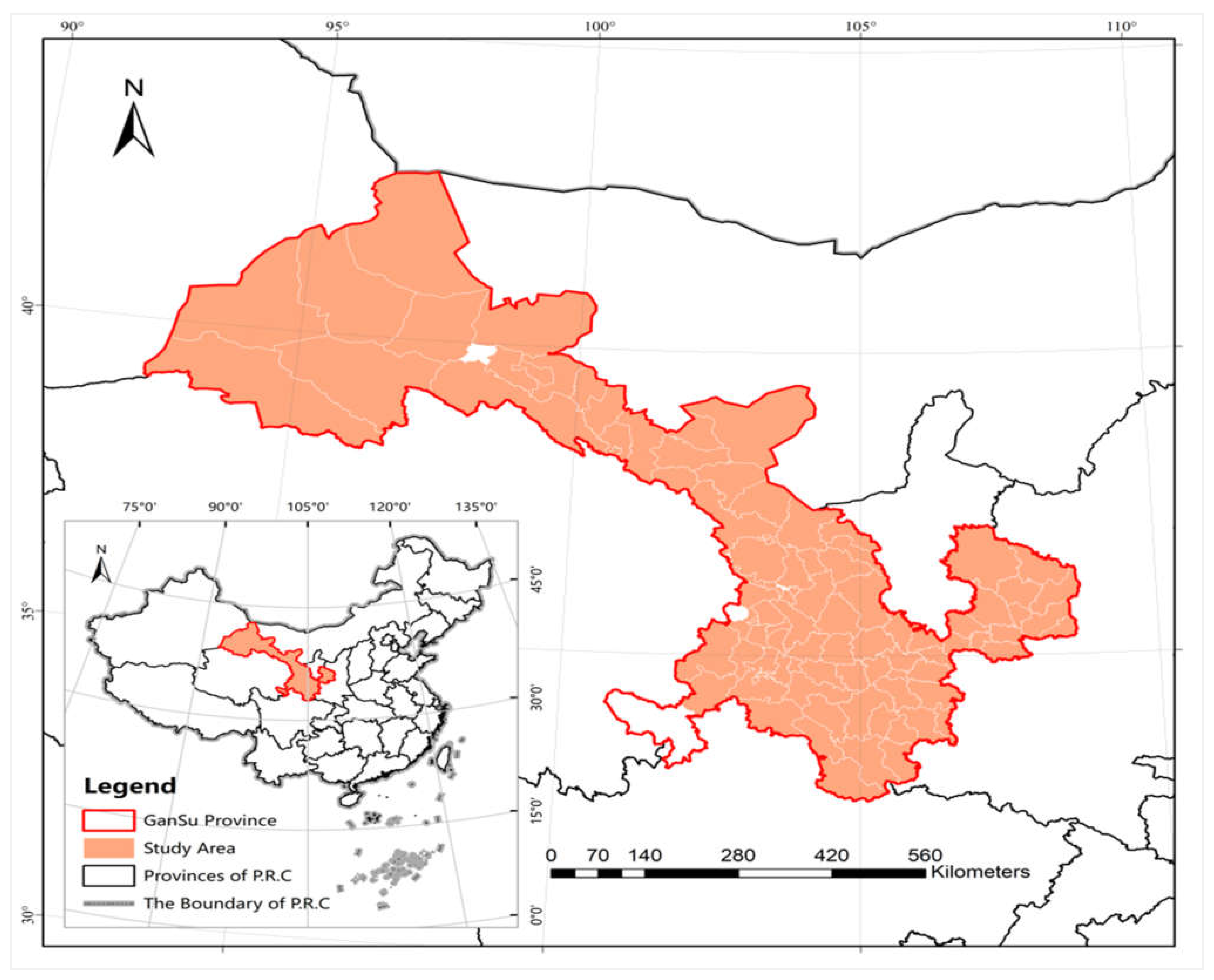


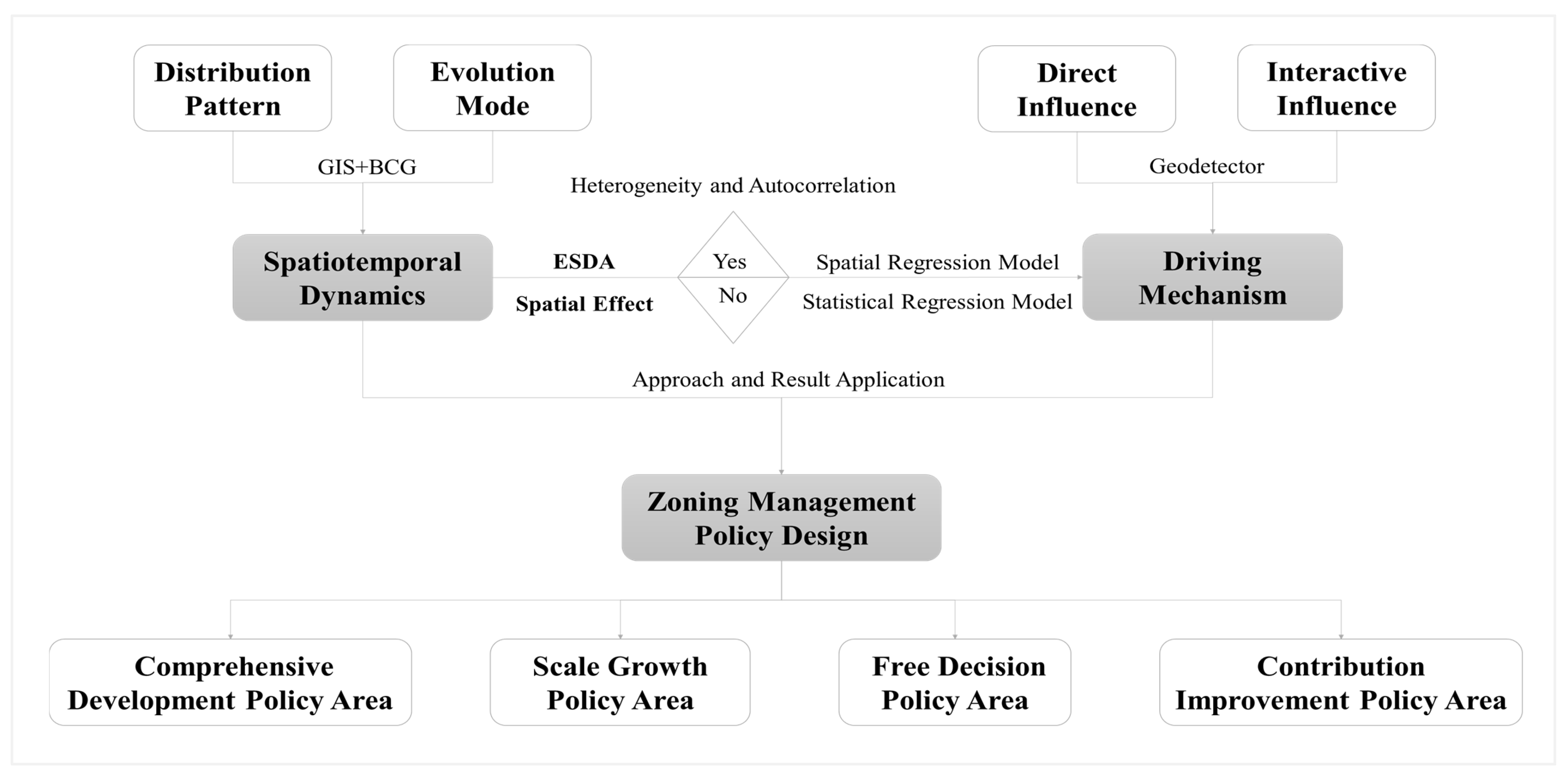
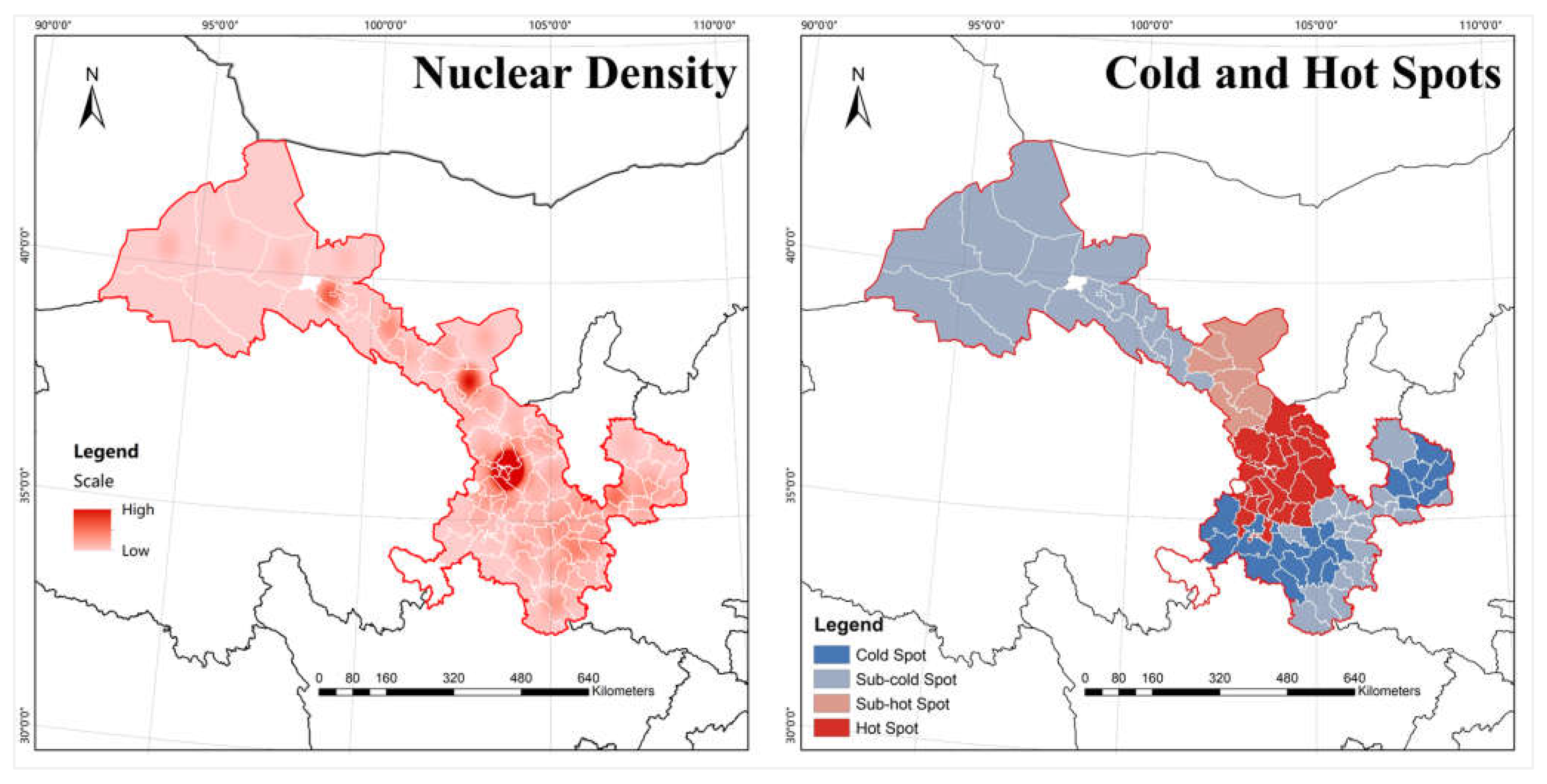
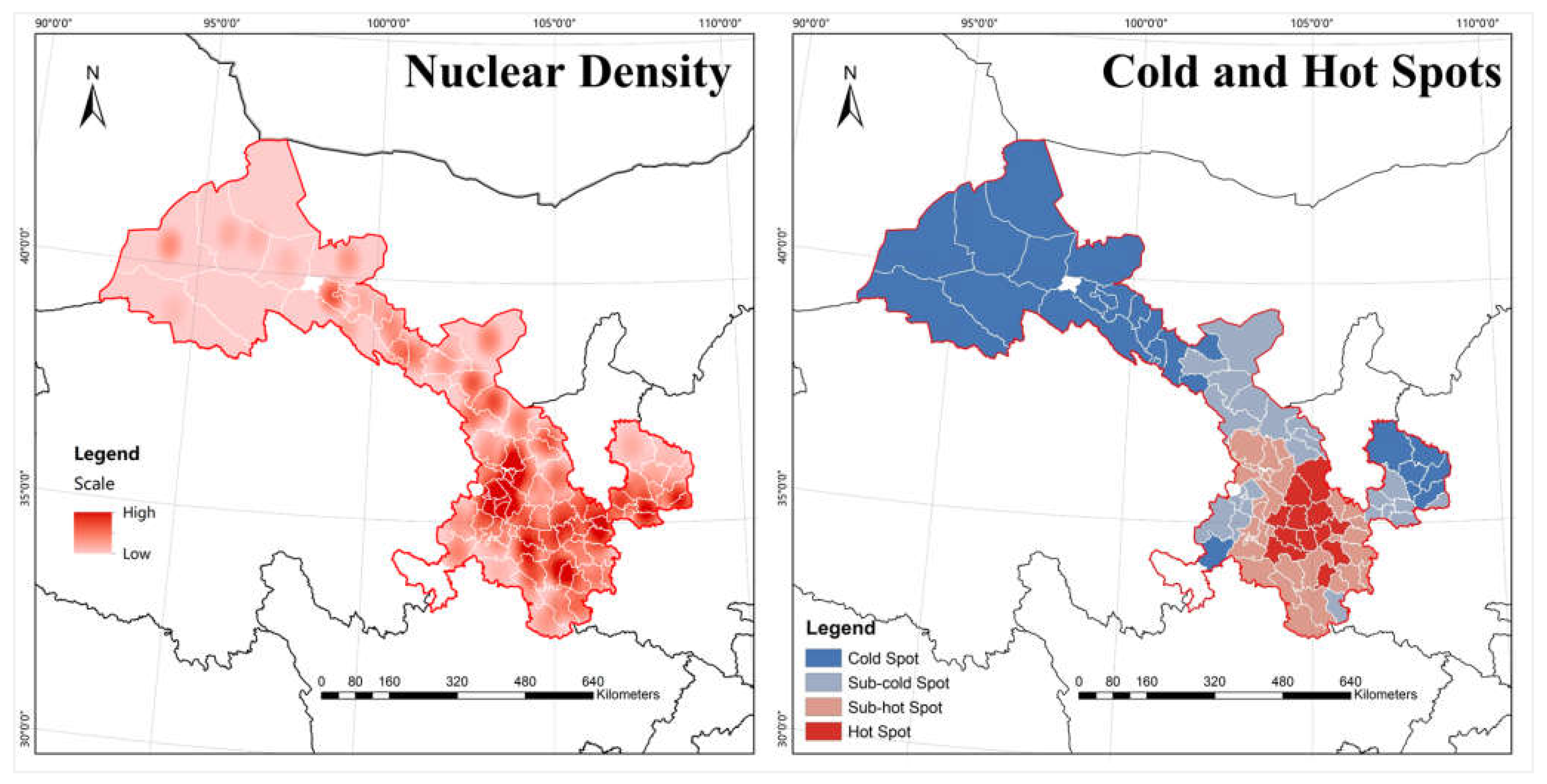
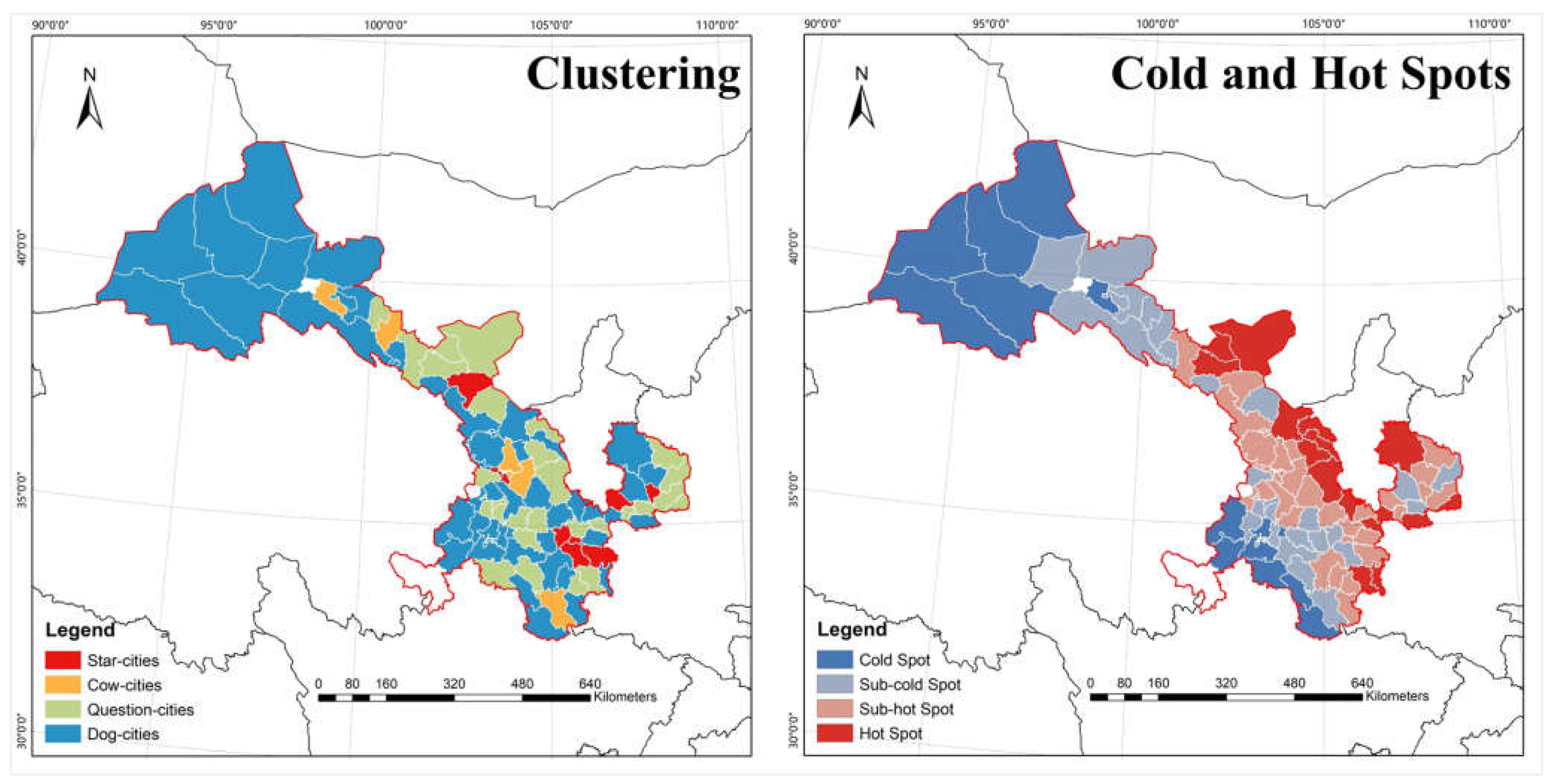
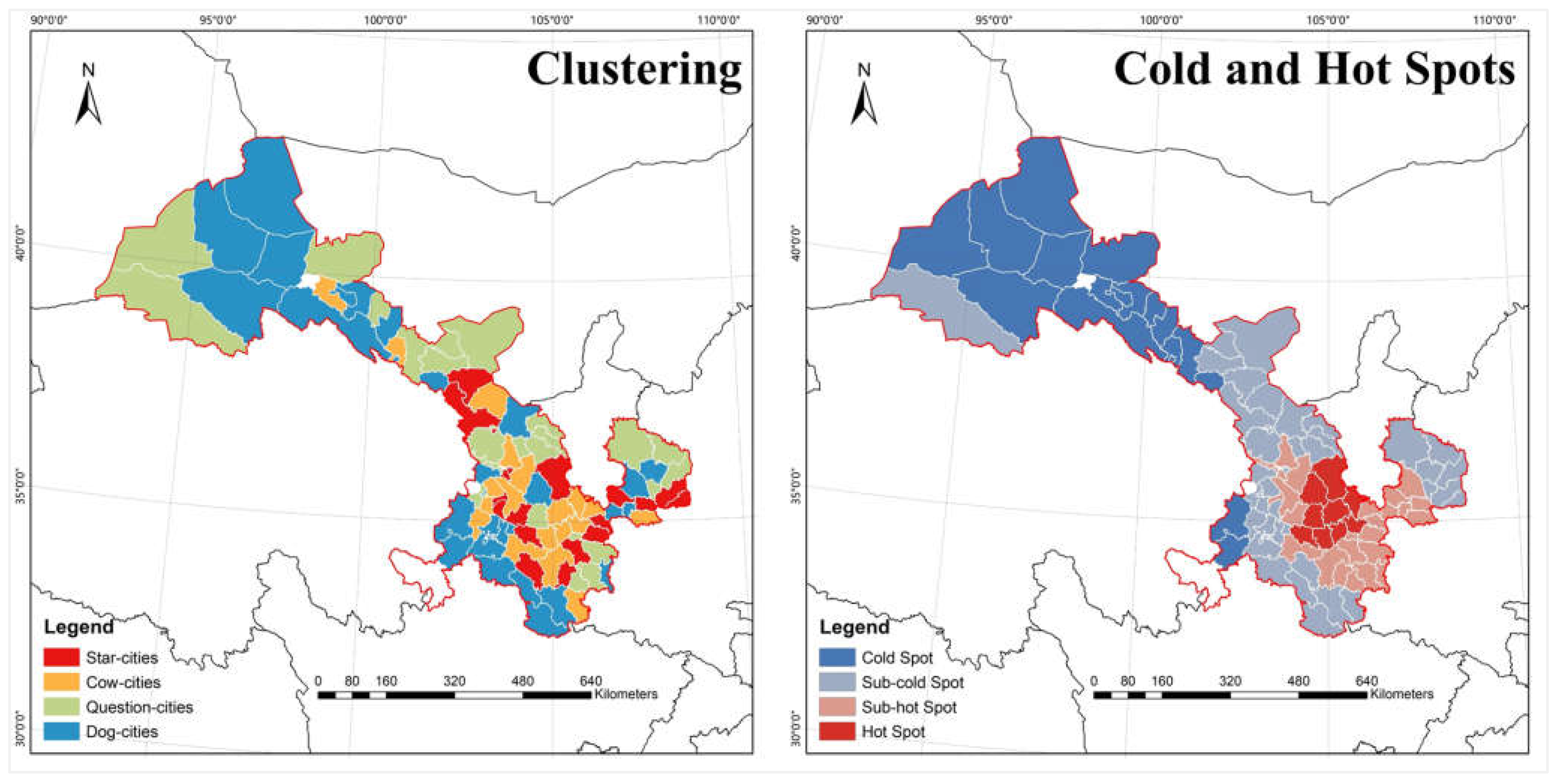
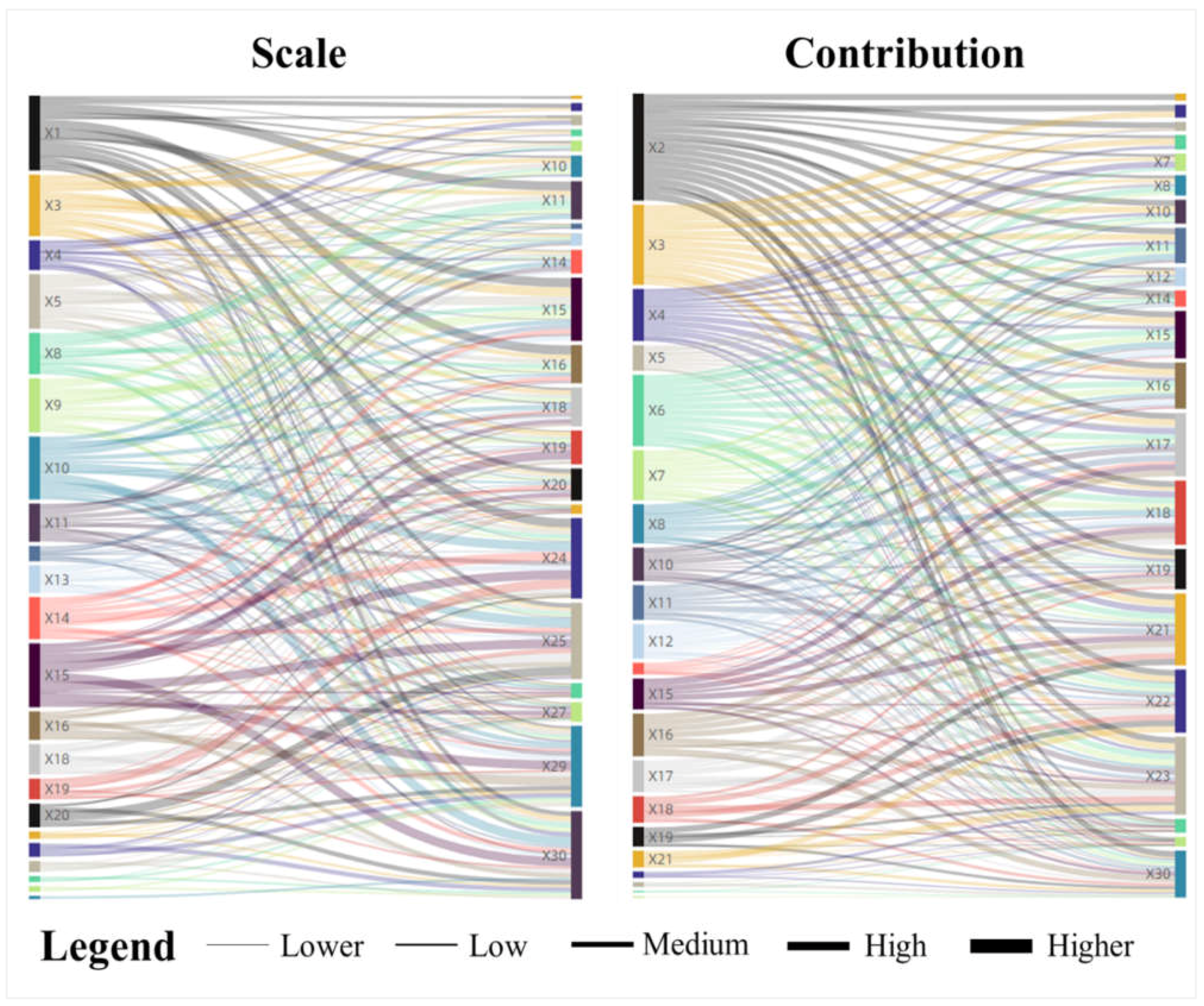
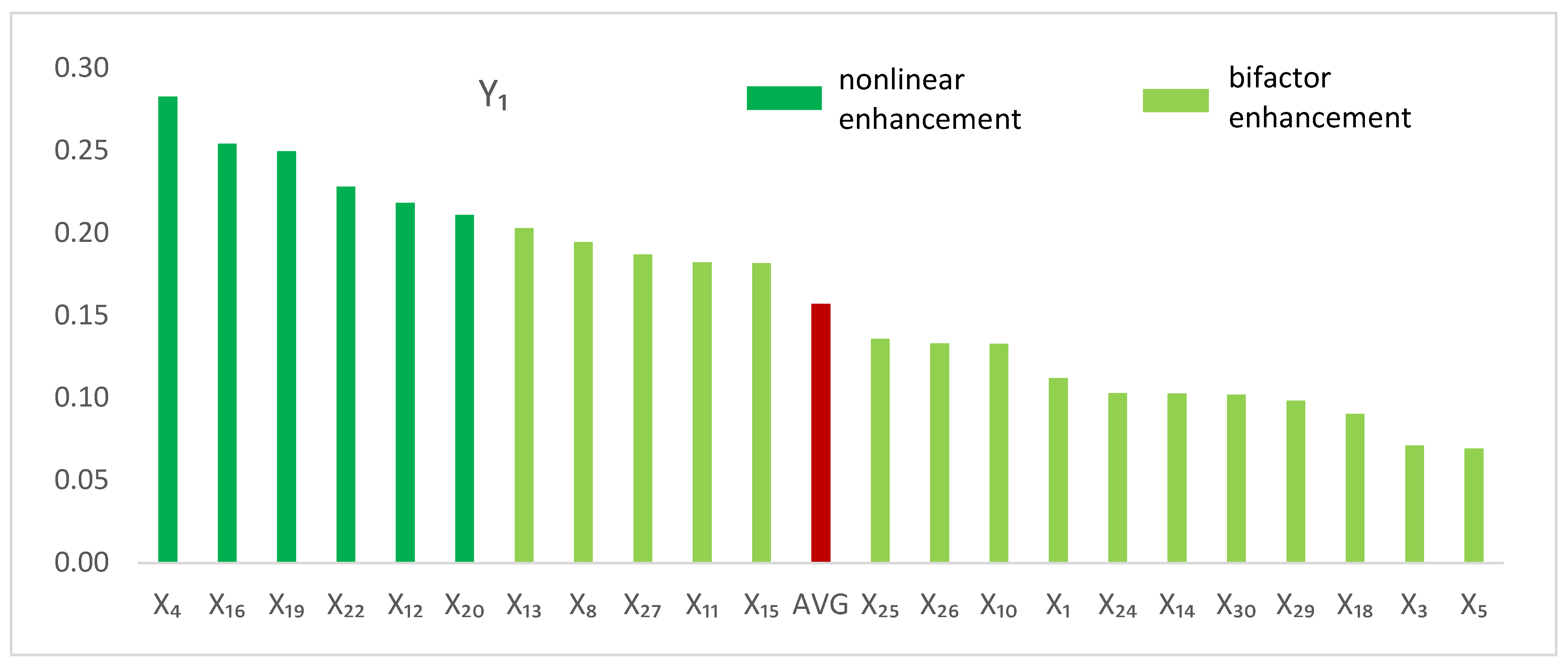
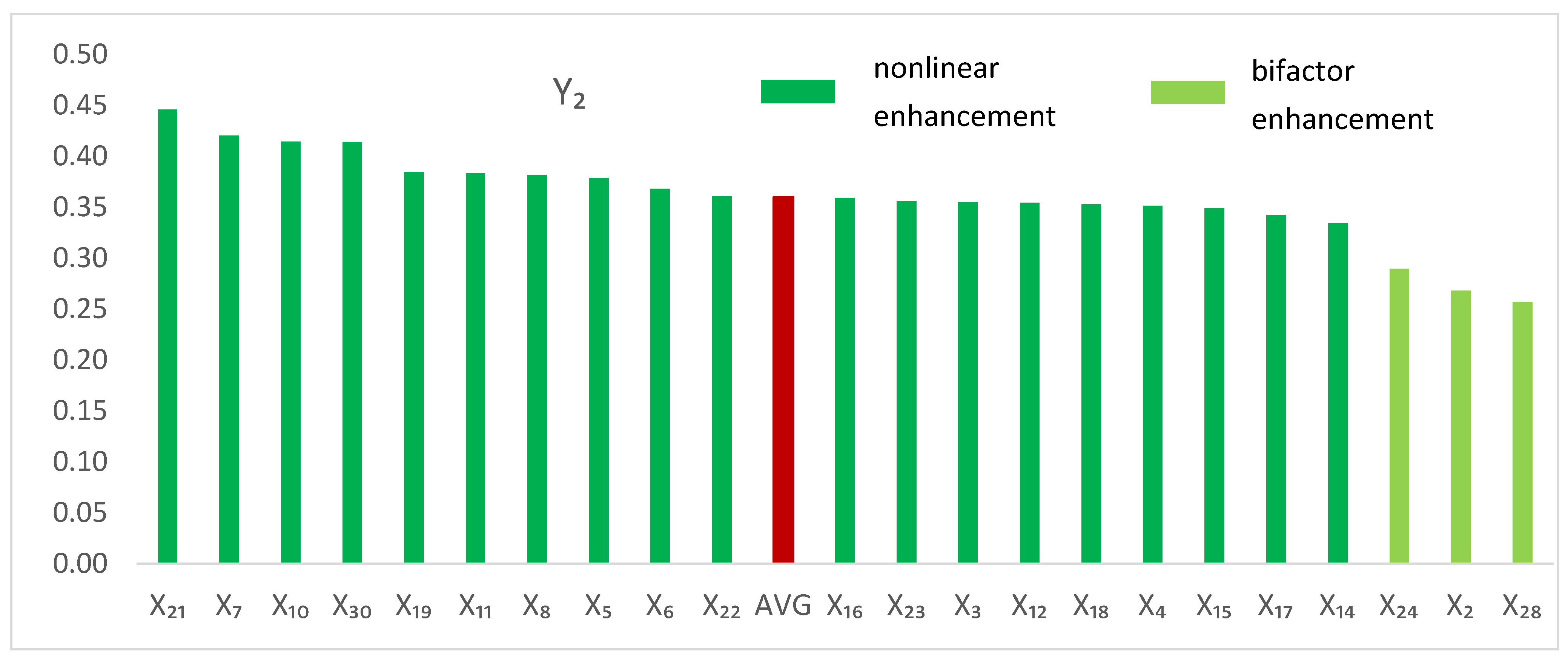

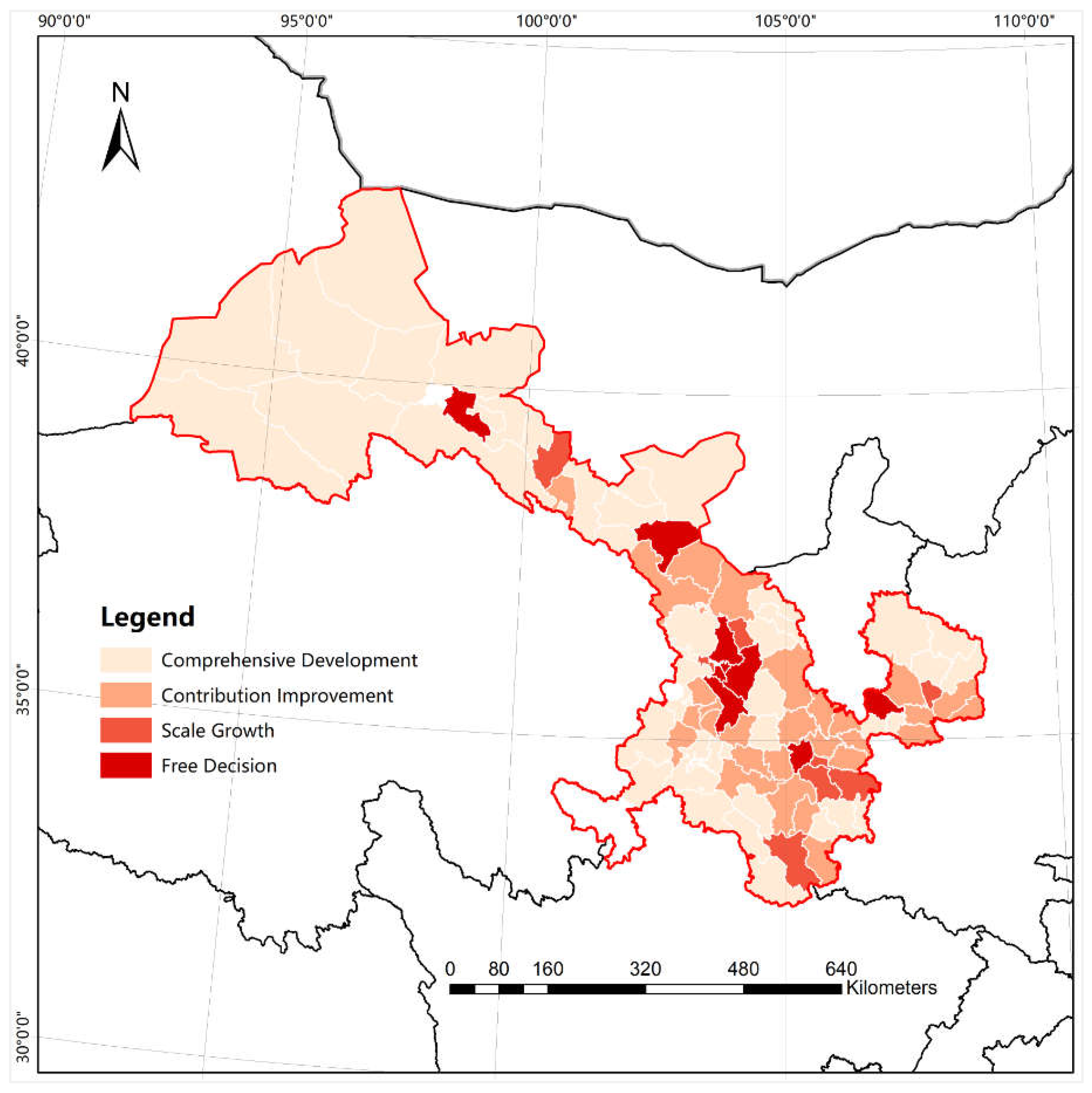
| Variable | Index | Code | Type |
|---|---|---|---|
| Dependent ) | Real Estate Added Value | Industry Scale | |
| Proportion of GDP | Economic Contribution | ||
| Independent ) | GDP | Economic Driving Force | |
| Per Capita GDP | |||
| Revenue | |||
| Expenditure | |||
| Total Retail Sales of Consumer Goods | |||
| Per Capita Disposable Income of Residents | |||
| Per Capita Consumption Expenditure of Residents | |||
| Added Value of Secondary Industry | Industrial Driving Force | ||
| Added Value of Tertiary Industry | |||
| Employment in the Secondary Industry | |||
| Employment in the Tertiary Industry | |||
| Output Value of Industry | |||
| Number of Industrial Enterprises above Designated Size | |||
| Output Value of Financial Industry | |||
| Permanent Resident Population | Population Driving Force | ||
| Household Registration Population | |||
| Floating Population | |||
| Urban Population | |||
| Urbanization Rate | |||
| Baidu Index of Real Estate Public Opinion | Social Driving Force | ||
| Mileage of Highway | |||
| Number of Secondary Schools | |||
| Number of Primary Schools | |||
| Number of Hospital Beds | |||
| Doctors and Related Technicians | |||
| Administrative Level | Institutional and Policy Driving Forces | ||
| Main Function Planning | |||
| Policies for Poor Counties | |||
| Amount of Deposit | |||
| Amount of Loan |
| Description | Interaction |
|---|---|
| q (∩) < Min (q (), q ()) | Weaken nonlinear |
| Min (q (), q ()) < q (∩) < Max (q ()), q ()) | Single nonlinear weaken |
| q (∩) > Max(q (), q ()) | Bifactor enhancement |
| q (∩) = q () + q () | Independent |
| q (∩) > q () + q () | Nonlinear enhancement |
| Index | Industrial Scale | Economic Contribution | |||
|---|---|---|---|---|---|
| q-Statistic | p-Value | q-Statistic | p-Value | ||
| GDP | 0.30 | 0.02 | 0.02 | 0.24 | |
| Per Capita GDP | 0.03 | 0.12 | 0.47 | 0.00 | |
| Revenue | 0.34 | 0.00 | 0.30 | 0.01 | |
| Expenditure | 0.05 | 0.05 | 0.26 | 0.02 | |
| Total Retail Sales of Consumer Goods | 0.34 | 0.00 | 0.12 | 0.08 | |
| Per Capita Disposable Income of Residents | 0.07 | 0.07 | 0.30 | 0.02 | |
| Per Capita Consumption Expenditure of Residents | 0.14 | 0.07 | 0.20 | 0.05 | |
| Added Value of Secondary Industry | 0.16 | 0.04 | 0.22 | 0.01 | |
| Added Value of Tertiary Industry | 0.35 | 0.00 | 0.01 | 0.44 | |
| Employment in the Secondary Industry | 0.31 | 0.01 | 0.17 | 0.06 | |
| Employment in the Tertiary Industry | 0.23 | 0.05 | 0.25 | 0.03 | |
| Output Value of Industry | 0.09 | 0.04 | 0.22 | 0.00 | |
| Number of Industrial Enterprises above Designated Size | 0.15 | 0.03 | 0.03 | 0.13 | |
| Output Value of Financial Industry | 0.30 | 0.01 | 0.14 | 0.03 | |
| Permanent Resident Population | 0.29 | 0.02 | 0.29 | 0.01 | |
| Household Registration Population | 0.13 | 0.02 | 0.33 | 0.00 | |
| Floating Population | 0.17 | 0.08 | 0.35 | 0.00 | |
| Urban Population | 0.32 | 0.01 | 0.31 | 0.00 | |
| Urbanization Rate | 0.11 | 0.05 | 0.21 | 0.03 | |
| Baidu Index of Real Estate Public Opinion | 0.17 | 0.01 | 0.00 | 0.82 | |
| Mileage of Highway | 0.06 | 0.30 | 0.21 | 0.05 | |
| Number of Secondary Schools | 0.06 | 0.03 | 0.27 | 0.01 | |
| Number of Primary Schools | 0.06 | 0.21 | 0.30 | 0.01 | |
| Number of Hospital Beds | 0.34 | 0.01 | 0.13 | 0.01 | |
| Doctors and Related Technicians | 0.31 | 0.01 | 0.08 | 0.18 | |
| Administrative Level | 0.19 | 0.01 | 0.02 | 0.86 | |
| Main Function Planning | 0.13 | 0.01 | 0.04 | 0.26 | |
| Policies for Poor Counties | 0.09 | 0.07 | 0.12 | 0.01 | |
| Amount of Deposit | 0.33 | 0.01 | 0.20 | 0.16 | |
| Amount of Loan | 0.33 | 0.01 | 0.15 | 0.10 | |
Publisher’s Note: MDPI stays neutral with regard to jurisdictional claims in published maps and institutional affiliations. |
© 2022 by the authors. Licensee MDPI, Basel, Switzerland. This article is an open access article distributed under the terms and conditions of the Creative Commons Attribution (CC BY) license (https://creativecommons.org/licenses/by/4.0/).
Share and Cite
Chen, H.; Zhao, S.; Zhang, P.; Zhou, Y.; Li, K. Dynamics and Driving Mechanism of Real Estate in China’s Small Cities: A Case Study of Gansu Province. Buildings 2022, 12, 1512. https://doi.org/10.3390/buildings12101512
Chen H, Zhao S, Zhang P, Zhou Y, Li K. Dynamics and Driving Mechanism of Real Estate in China’s Small Cities: A Case Study of Gansu Province. Buildings. 2022; 12(10):1512. https://doi.org/10.3390/buildings12101512
Chicago/Turabian StyleChen, Hua, Sidong Zhao, Ping Zhang, Yong Zhou, and Kerun Li. 2022. "Dynamics and Driving Mechanism of Real Estate in China’s Small Cities: A Case Study of Gansu Province" Buildings 12, no. 10: 1512. https://doi.org/10.3390/buildings12101512
APA StyleChen, H., Zhao, S., Zhang, P., Zhou, Y., & Li, K. (2022). Dynamics and Driving Mechanism of Real Estate in China’s Small Cities: A Case Study of Gansu Province. Buildings, 12(10), 1512. https://doi.org/10.3390/buildings12101512







